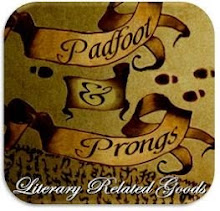Today, I have the great pleasure to host a fantastic middle grade author who wrote a spectacular book called The Hole in the Wall. You can find my review of her book here.
When did you first consider yourself a writer? 
I wrote my first story on the toilet seat lid in orange crayon when I was three years old. My mother was brushing her teeth at the time. I asked her what my scribbles said, and she told me, “Nothing, now clean that off.” Getting out the cleanser, I realized that writing was a secret code I’d have to learn if I wanted other people to read the words I spun from my imagination.
After I got to school and learned the code, I wrote, wrote, wrote—stories, poems, plays, comic strips, and letters to my faraway aunt. My first “publication” was a play produced in the fourth grade, in which I played the princess who saved the prince from the dragon. The next year’s class put on my play too, and that perhaps was the moment when I first considered myself a real writer, someone whose writing had a life beyond me.
What kind of research, if any, did you do for The Hole in the Wall?
Good question! I can’t even boil a potato without doing research at some level. Nowadays I’m addicted to Googling for information while I write, but before the Internet I used to make lists of things to look up in the library so I could get the details of my time, place, and people just right. What plants and animals live there? When does the grass start to green in the spring? How do the locals speak?
For The Hole in the Wall, I did a lot of research on rocks, from collecting them to building with them to grinding them into pigments for paints. I researched the habits of chickens. And I spent a lot of time studying something scientists call “chaos theory.”
You may have noticed that the book has a quote in the front by Edward Lorenz, “Does the flap of a butterfly’s wings in Brazil set off a tornado in Texas?” This is a famous idea in weather chaos theory, suggesting that a very small action in one place could cause a huge and unpredictable pattern in another place. Chaos theory also explains things like cuckoo clocks in the same area going off at the same time even if they were originally set for different times. I used lots of imagery from chaos theory in the book, but you don’t even have to know it exists to enjoy the adventure.
What was the most challenging aspect of writing The Hole in the Wall?
Oh, that would definitely be layering the science fantasy plot with the realistic family drama, especially making the outrageous fantastical happenings seem as real to the reader as they were to me and my characters Sebby and Barb. I worked hard at that.
What's the best thing about being an author?
It’s a heady moment to see your name on the cover of a published book, but the very best thing about being an author is getting absorbed in the imaginary world where your characters live and channeling their lives into words on a page. That feeling is better than double chocolate ice cream.
What's next for you? Are you currently working on or have plans for future projects?
Yes! Definitely! That’s all I can say for now because I’ve learned it’s better to write now, talk later. But I’m excited to tell you about something new I’m doing at my web site during this blog tour. Each day at lisarowefraustino.com, I’ll be posting a new session of “Dr. Lisa’s Class” where visitors can drop in for lessons based on my years of teaching literature and creative writing for kids. Today’s class is a creativity workshop on finding ideas to write. Come on over!
Announcements!
Monday, November 1, 2010
Interview with Lisa Rowe Fraustino
Subscribe to:
Post Comments (Atom)







What a great interview!! I've now put this book on my wish list!!
ReplyDeleteHi, Coffee and Book Chick! I'm glad you like the interview and I hope you'll like the book too.
ReplyDelete